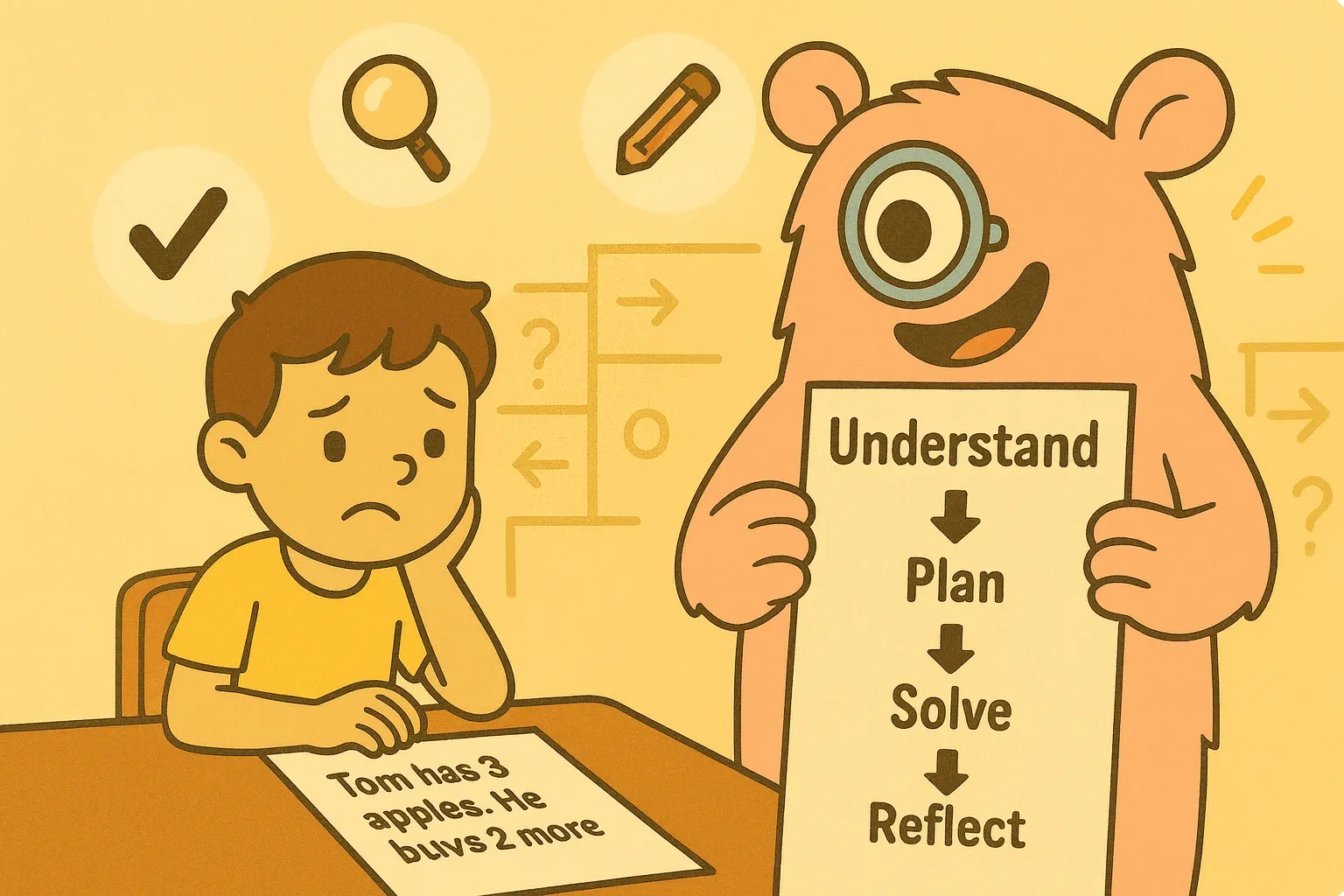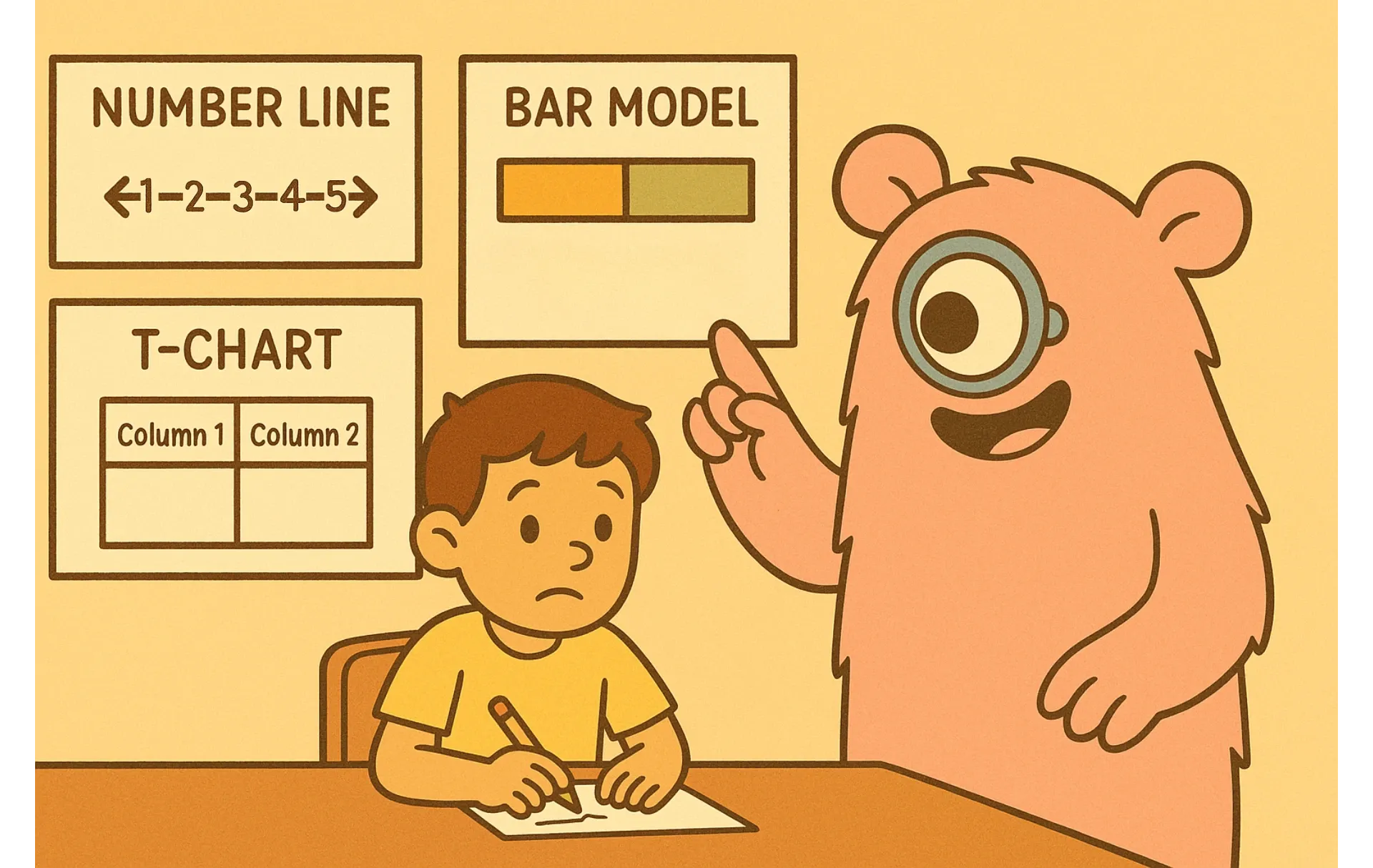Metacognitive Math Routines: Giving Kids a Roadmap for Word Problems
TL;DR:Word problems combine language and mathematics, which makes them uniquely challenging for many learners. Metacognitive routines - a structured approach that teaches children to think about their thinking - offer a powerful roadmap. By guiding kids through stages of understanding, planning, solving and reflecting, parents and teachers can build confidence and problem‑solving stamina. Research shows that students with stronger metacognitive skills consistently outperform peers in math and that explicit metacognitive instruction improves problem solving. This article explains the science behind metacognition, outlines a kid‑friendly problem‑solving routine and offers practical strategies for home and classroom.
Introduction: Why Word Problems Feel Like Mazes
Ask a child about math and they might conjure images of numbers, not sentences. Yet word problems are everywhere - from splitting a bill at a restaurant to comparing distances on a map. They ask students to interpret language, identify relevant information and choose the right operations. It’s no wonder that many kids (and adults!) groan when they see a paragraph of text above a simple equation. Recent research shows that language comprehension is a stronger predictor of success on math word problems than arithmetic skill. That means children who read well can often solve word problems even when their math skills are average. For learners with dyslexia, autism or ADHD, the linguistic and working‑memory demands can make word problems especially daunting. Fortunately, there is a science‑backed way to navigate these “mazes”: metacognitive routines.
What Is Metacognition?
Metacognition literally means “thinking about thinking.” Psychologist John Flavell described it as awareness of one’s own cognitive processes and the ability to monitor and regulate them. Researchers distinguish between two broad components:
- Knowledge of cognition: understanding what one knows and the strategies available. This includes declarative knowledge (facts and concepts), procedural knowledge (how to perform tasks) and conditional knowledge (when and why to use particular strategies).
- Regulation of cognition: planning, monitoring and evaluating learning activities. Planning involves choosing an approach; monitoring means checking progress and adjusting strategies; evaluating entails reflecting on outcomes and what might be improved.
An analysis of metacognition in mathematics education found that metacognition is one of the strongest predictors of mathematical achievement. Without sufficient metacognitive development, children struggle with mathematics. Conversely, explicit metacognitive instruction - such as teaching students how to plan, monitor and evaluate their work - enhances problem solving and promotes self‑directed learning.

Why Word Problems Are Difficult
Word problems require simultaneous processing of language and numbers. In a study with 325 second graders, it was found that text comprehension and oral language skills were strong predictors of word‑problem performance. Starting vocabulary and language skills had a bigger impact on year‑end word‑problem scores than arithmetic ability. This means that if a child struggles with language, they might falter on word problems even when they can perform calculations. Another study discovered that learners who solved word problems correctly used richer metacognitive strategies than peers who answered incorrectly. The difference was especially pronounced in the stages of selecting and executing a solution method and checking the answer. In other words, success hinged on planning and monitoring, not simply understanding the problem. The same study showed that explicit instruction raised third graders’ metacognitive skills to the level of fifth graders.
A Metacognitive Roadmap: Four Stages of Problem Solving
We can break word‑problem solving into four stages. At each stage, metacognitive prompts help children think about their thinking and choose next steps consciously.
1. Understand the Problem
Students first read the problem carefully, clarify vocabulary and identify what is being asked. Encourage them to:
- Read and reread: Have kids read the entire problem aloud. If it’s still unclear, read again and highlight or underline keywords.
- Retell in their own words: Ask, “Can you explain what the problem is about?” Translating text into a personal narrative boosts comprehension.
- Ask metacognitive questions: “Have I seen a similar problem before?” “What information do I know, and what do I need to find?” These questions help children tap into declarative and conditional knowledge.
- Note language clues: Recognize comparative words (e.g., “more than,” “twice as many”) and units. For children with dyslexia or autism, simplifying sentence structures and preteaching vocabulary can reduce cognitive load.
2. Plan and Choose a Strategy
Once the problem is understood, learners need to decide how to solve it. Research shows that purposeful planning distinguishes high‑performing problem solvers. To build planning skills:
- Brainstorm possible strategies: Could the problem be represented with a picture, table, number line or equation? Encourage kids to think of at least two methods.
- Create a visual representation: Drawing diagrams supports metacognitive control. The Rwandan study noted that students controlled their learning by writing sentences to track actions, making tables of knowns and unknowns, and drawing pictograms. These visual organizers reduce working‑memory load and improve accuracy.
- Estimate and predict: Encourage children to make an educated guess about the size of the answer. Estimation sets a benchmark that helps them self‑monitor later.
3. Execute and Monitor
During execution, students carry out calculations while checking that each step makes sense. Effective metacognitive prompts include:
- Self‑checking: Ask, “Does this step follow my plan?” or “Am I still answering the correct question?” Monitoring aligns with regulation of cognition and prevents random trial‑and‑error.
- Look for alternative paths: If the chosen strategy stalls, encourage children to pause and consider other methods. Flexibility is a hallmark of procedural knowledge.
- Maintain organization: Use structured workspaces. For example, label columns in a table or keep equations lined up. Structured representations help children avoid errors and focus on reasoning.
4. Evaluate and Reflect
After obtaining an answer, metacognition prompts students to verify and learn from the process. Research emphasises that checking and extending solutions require sophisticated metacognitive skills. Strategies include:
- Check the answer: Does the solution make sense with the estimate? Are the units correct? This final check aligns with the evaluation component of metacognitive regulation.
- Explain reasoning: Have children articulate or write why they think their answer is correct. Explaining fosters deeper understanding and reveals gaps.
- Reflect on the process: Ask, “What strategy worked well?” or “What would I do differently next time?” Reflection transfers learning to new problems and supports growth mindset.
Practical Strategies to Teach Metacognitive Routines
Building metacognitive habits requires intentional teaching. Here are research‑backed strategies for parents and teachers:
Model Thinking Aloud
Demonstrate the routine by solving a problem aloud. Verbalize what you notice, questions you ask yourself and how you decide on a strategy. Explicit modeling helps children internalize procedural knowledge and invites them to adopt self‑questioning. You can also have students teach a peer or a toy - externalizing their thinking strengthens working memory and metacognitive regulation.
Use Graphic Organizers
Anchor charts, flowcharts, bar models and tables act as roadmaps. They allow children to dump information from working memory onto paper, making complex sequences manageable. A study of sixth graders found that students who produced accurate visual-schematic representations increased their chance of solving word problems correctly almost six times; inaccurate schematic or pictorial representations decreased success.Encourage kids to pick the organizer that fits the problem: a number line for sequential changes, a bar model for part–whole relationships, or a T‑chart for organizing data.

Chunk and Annotate
Teach children to break text into smaller pieces and highlight essential information. Annotation reduces cognitive load and helps them focus on relevant details. In your math lessons or homework routines, ask questions like “Which numbers are important?” and “What words tell us to add or subtract?”
Preteach and Reinforce Vocabulary
Because language plays a central role in word problems, explicit instruction of math vocabulary is crucial. Introduce terms like “difference,” “sum,” “twice,” or “left” with concrete examples.
Normalize Reflection
Make reflection a regular part of your routine. After completing a problem set, spend a few minutes discussing which strategies were effective and where mistakes occurred. Encourage students to celebrate persistence, not just correct answers. Reflection fosters conditional knowledge - knowing when and why to use a strategy -and builds resilience.
Supporting Neurodivergent Learners
Children with autism, dyslexia or ADHD often face additional obstacles in word‑problem solving. Autistic learners may struggle with pragmatic language and executive functions; dyslexic learners might have difficulty decoding text and sequencing; and children with ADHD may have limited working memory and sustained attention. Research indicates that visuospatial short‑term memory and central executive working memory are strong predictors of math performance, while phonological short‑term memory is a lesser contributor to non‑word-based math problems, and language processing difficulties can impede understanding.
To support neurodivergent learners:
- Simplify language: Rephrase problems using shorter sentences and familiar vocabulary. Present information in bullet points rather than dense paragraphs.
- Provide visual supports: Use manipulatives, icons and color coding. Visual anchors reduce working‑memory load and make abstract concepts tangible.
- Break tasks into steps: Offer one instruction at a time and let the child complete it before moving on. This scaffolding helps prevent overload.
- Encourage verbalization: Have learners talk through their thinking to externalize working memory and reinforce understanding.
- Create checklists or mnemonics: Simple acronyms like R–U–C–S (Read–Understand–Choose numbers–Solve) provide an easy‑to‑remember roadmap. These metacognitive supports help students monitor and organize their thinking.
Encouraging a Growth Mindset
Metacognitive routines are not about perfection; they are about awareness and improvement. When children make mistakes, frame them as learning opportunities. Ask reflective questions: “What step did we miss?” “How could we check next time?” Over time, students develop confidence and independence. Research shows that learners who revise and reflect on their work achieve deeper understanding and can transfer skills to new contexts.
Conclusion
Word problems don’t have to be an insurmountable hurdle. By teaching children to think about their thinking, we equip them with a roadmap that transcends individual questions. Metacognitive routines -understand, plan, execute, evaluate - help kids navigate the language of problems, choose effective strategies and learn from their experiences. Studies across the globe reveal that metacognitive knowledge and regulation are powerful predictors of math success. Whether you’re a parent guiding homework at the kitchen table or a teacher designing lessons, embedding these routines can transform word problems from a source of anxiety into an opportunity for curiosity and growth.
Frequently Asked Questions
What is metacognition in simple terms?
Metacognition means being aware of your own thinking processes. In math, it involves knowing what you know, recognizing what you don’t know and actively planning, monitoring and evaluating your problem‑solving strategies.
How do I teach my child to use metacognitive strategies?
Start by modeling your own thinking aloud. Use questions like “What is the problem asking?” and “Does this answer make sense?” Provide graphic organizers, encourage drawings or tables and build routines like R–U–C–S. Gradually shift responsibility to your child as they become more confident.
Do metacognitive routines help all students?
Yes. Research shows that strong metacognitive skills benefit learners across ability levels and can be explicitly taught. Metacognitive instruction is particularly powerful for struggling readers and neurodivergent learners because it provides clear steps and reduces cognitive load.
Are there any tools that can help us practice at home?
Many educational apps and games incorporate metacognitive supports such as visual modeling, step‑by‑step prompts and reflective questions. You can also create simple checklists or use a whiteboard to organize thinking.
References
- Reyes J.D., Reyes Z.Q., Metacognitive learning in solving mathematical word problems, Psychology and Education (2024): 217–253
- Reyes J.D., Reyes Z.Q., A model of teaching metacognition in solving mathematical word problems,International Journal of Contemporary Sciences (2024): 728–747
- Fuchs L.S., et al., Text comprehension and oral language as predictors of word‑problem solving, Scientific Studies of Reading (2017): 152–166
- Thi‑Nga H., Binh V.T., Nguyen T.T., Metacognition in mathematics education: from academic chronicle to future research scenario, EURASIA Journal of Mathematics, Science and Technology Education (2024): em2427
- Kusaka S., Ndihokubwayo K., Metacognitive strategies in solving mathematical word problems: a case of Rwandan primary school learners, SN Social Sciences (2022): 186
- Boonen A.J.H., van Wesel F., Jolles J., van der Schoot M., The role of visual representation type, spatial ability, and reading comprehension in word problem solving:An item‑level analysis in elementary school children, International Journal of Educational Research 68 (2014): 15–26
- Gaye F., Groves N.B., Chan E.S.M., Cole A.M., Jaisle E.M., Soto E.F., Kofler M.J., Working Memory and Math Skills in Children with and without ADHD,Neuropsychology (2023)
